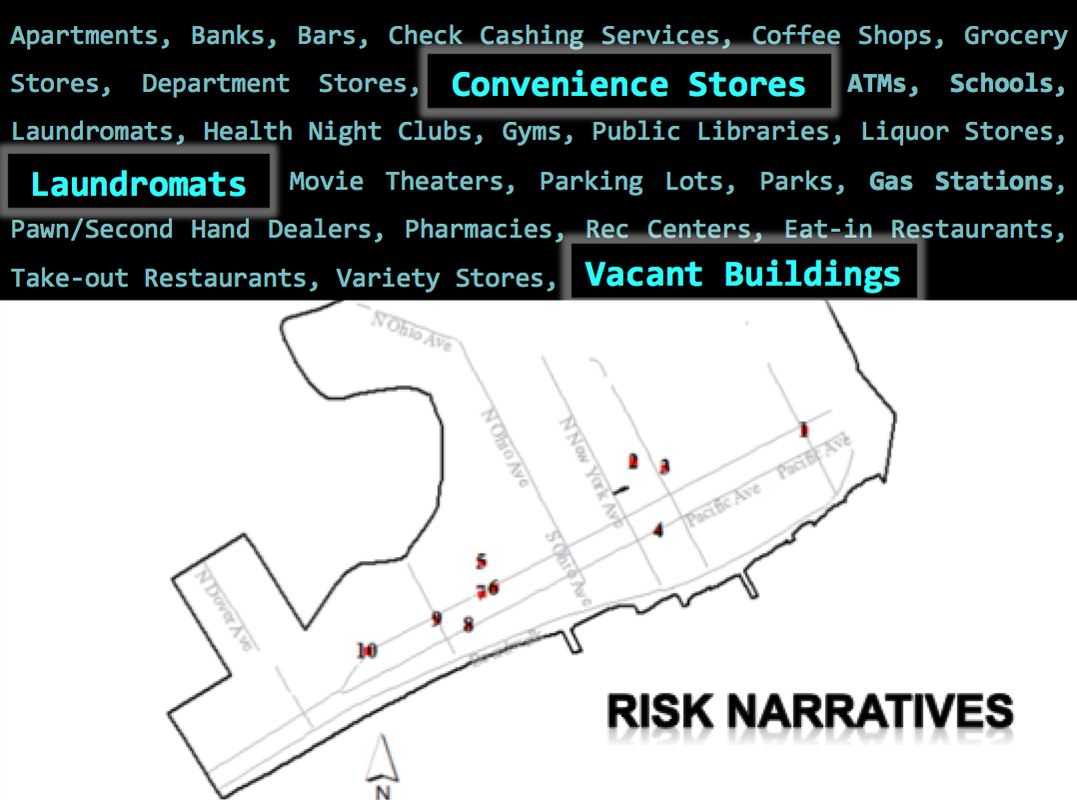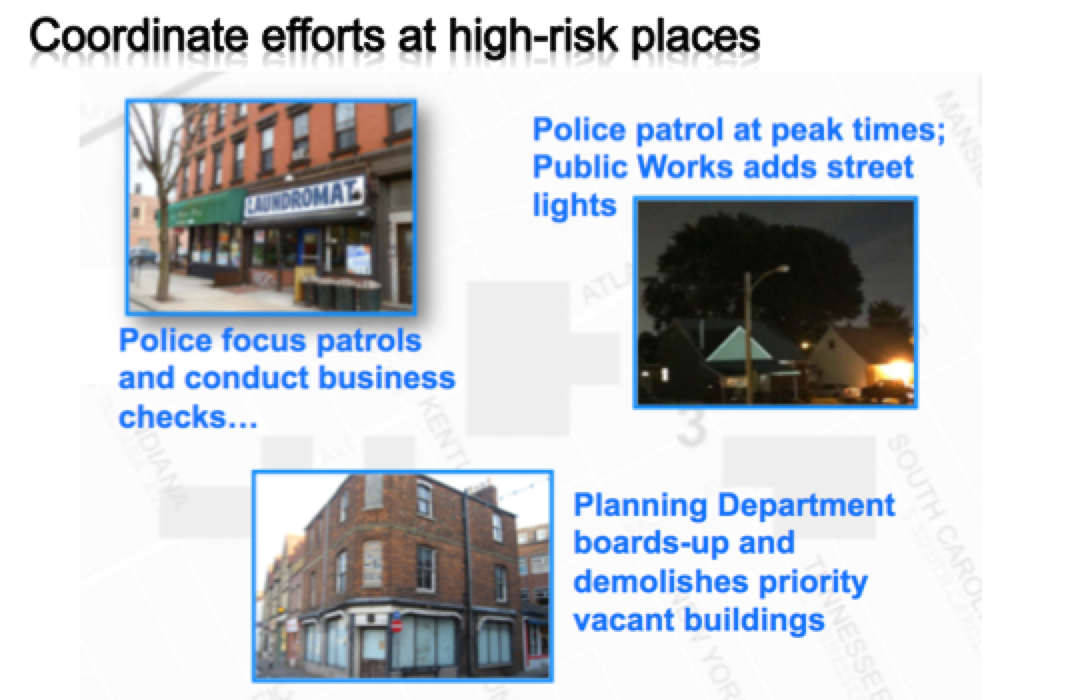|
Develop Spatial Risk Narratives. A risk narrative is a spoken or written account of how events, such as crimes, relate to other phenomena in the jurisdiction. Crime events occur within spatial and situational contexts. So, assessing the crime risk narrative is an endeavor for police and other stakeholders to think spatially about criminal events and behaviors.
In Atlantic City, NJ, risk narratives were formed from the results of Risk Terrain Modeling (RTM): police and other stakeholders believed shootings to be connected to drug sales and related turf conflicts whereby ‘convenience stores’ are the places where drug buyers are solicited; Nearby ‘laundromats’ are locations where drug transactions are made; ‘vacant buildings’ located nearby are used by drug dealers as stash houses for drugs and weapons, or by drug buyers to use drugs after purchase. These three environmental features were top risk factors identified by RTM. [Atlantic City is discussed in the forthcoming book "Risk-Based Policing: Evidence-Based Crime Prevention with Big Data and Spatial Analytics" (2018, Univ. of CA Press) and was spotlighted on the National Geographic Channel in 2017.] When community stakeholders used the data driven evidence to surmise that drugs, prostitution, retail businesses, and vacant properties are related in this way to shootings, they were more likely to agree with police that certain places will probably experience shooting incidents in the future. This led to conversations about how to effectively target and remediate the problems in these locations. That is, to disrupt the narrative. Policing interventions reduced shooting events by focusing preemptively on the risky places. Areas around laundromats received directed police patrols; police officer ‘meet-and-greets’ with convenience store managers were implemented at frequent intervals each day; and the city’s Planning and Development department prioritized remediation of vacant properties and installations of new LED street lights (to replace dimmer halogen lamps) at the highest risk places. Risk narratives aid police in articulating crime problems in diverse ways, beyond those entailed in established paradigms, practices, or procedures. Risk narratives support reasoning with hypotheses, whereby preconceived notions about a crime problem and its relationships to space and time are tested and addressed accordingly. Risk terrain modeling informs and advances risk narratives. Risk narratives enable effective risk governance led by police and supported by other city officials. Crime is dynamic, and a function of the interaction of people at places. You may already know where crimes are happening in your city. RTM helps to identify why these places are chronic problems. You bring meaning and context to the analytical results via risk narratives. This allows policing operations to be enhanced, not replaced, by technology. From Risk Terrain Modeling and risk narratives about spatial and situational contexts of crime, strategies for police are developed that focus on risk reduction in order to prevent crimes. Comments are closed.
|
|
|
The official website of Risk Terrain Modeling (RTM) research and resources, based out of Rutgers, The State University of New Jersey.
|



 RSS Feed
RSS Feed